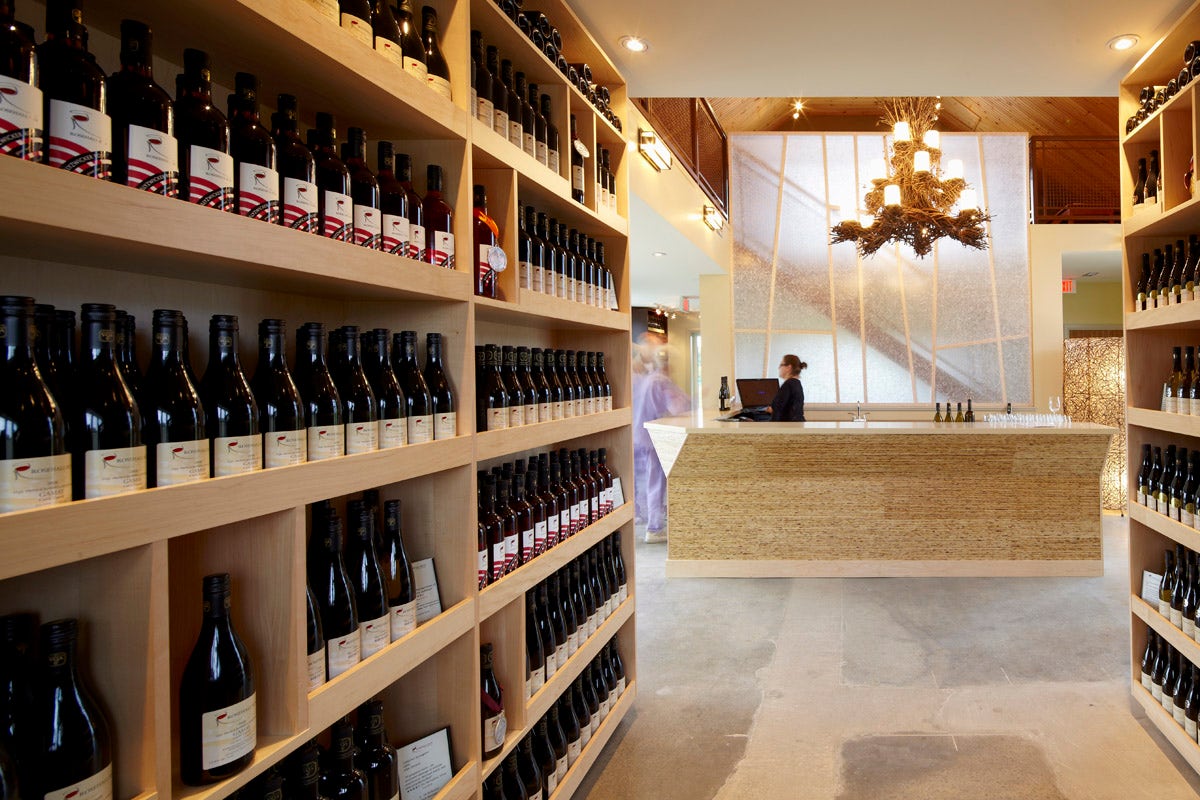“What’s it like growing grapes in Siberia?”
That was the joke put to Caroline Granger when she began to plant vines on her family farm in Canada’s Prince Edward County. Located on Lake Ontario’s northern shore, the region is a relative newcomer to the cultivation of wine grapes. Granger and others carried out their first plantings nearly two decades ago.
To be sure, the winters can be harsh here. Each year, most wineries bury their vines painstakingly by hand, one-by-one. But the soil, with its limestone substrate, is similar to that of Burgundy, and usually, the lake moderates the climate enough to ensure harvest.
Relatively unknown outside Canada, “the County,” as it’s called north of the border, has long attracted weekenders from Toronto, Montreal and Ottawa. It boasts historic towns, rolling hills and 500 miles of shoreline. But wine’s arrival has quickened the bucolic region’s pulse.
Visitors tour and taste at its 40-plus wineries, dine at restaurants pairing locally sourced foods with wine and stay in one of three new hotels that inhabit renovated old buildings. One, The June Motel, is a reimagined roadside motel primped up with pink paint and tropical-themed wallpapers. Corkscrews in the rooms bear witness to rise of wine tourism in the area.

The Wineries to Visit
Grange of Prince Edward Winery
Granger transformed her family’s barn, built in 1826, into a tasting room for this winery near Hillier, which she runs with her daughter, Maggie Belcastro. A single mother with three kids at the time, Granger convinced her father, a cattle farmer who also grew a few crops, to let her try to grow grapes.
“He might have thought I was crazy, but he let me try it,” she says.
After she took a winemaking course at a nearby college, Granger planted Chardonnay, Pinot Noir and Gamay, cold-tolerant grapes that thrive in Burgundian-type soil. She then moved on to Riesling, Pinot Gris and Cabernet Franc. Granger now has 60 acres under vine that produce sparkling and still wines along with a farmhouse cider, a production mix that’s typical for the region.

The Old Third
Bruno François and Jens Korberg, proprietors of The Old Third and former Torontonians, converted an old barn into an airy tasting room. There, they serve offerings like unoaked Chardonnay, Pinot Noir, Pinot Noir Blanc and cider made from Golden Russet apples. Some proceeds from every bottle of Chardonnay are donated to the hospital that has been treating François for a brain tumor.
“I’m responding well to the treatment, but it gives you a longer view; this was what we wanted, how we wanted to live here,” says François.

Hinterland Wine Company
Located near Hillier, Hinterland Wine Company specializes in sparkling wine and was launched by transplanted Toronto couple, Jonas Newman and Vicki Samaras. Newman was a former maître d’ at one of that city’s top restaurants, while Samaras was a botanist.
“We married our skill sets, our different networks, in this project,” says Samaras. “I’m more science, he’s more art.”
They employ the three main methods to make sparkling: the traditional method for the Les Etoiles bottling made mostly from Chardonnay and Pinot Noir, the Charmat method for the Borealis Charmat Rosé made from Gamay in on-site tanks, and méthode ancestrale for the Lacus Pétillant Naturel, also derived from Gamay. During the summer months, lunch can be had from on-site food trucks.

Rosehall Run Vineyards
This 150-acre estate is a short drive from Hillier, along the Loyalist Parkway named for the county’s first settlers, American colonists loyal to the crown who moved north after the Revolutionary War.
The winemaker, Dan Sullivan, is a self-described serial entrepreneur. He learned his craft in a group of like-minded amateurs that made wine with juice from Ontario’s better-known wine region, Niagara.
“When we got here, in the ’90s, local winemaking was in its infancy,” says Sullivan. “We tested the soil. [We] couldn’t believe how right it was. Chardonnay loves it here.”
His 2013 JCR Chardonnay is the rare Prince Edward County wine to have won international recognition. It won silver medals at the Chardonnay-du-Monde and the Decanter World Wine competitions.

Long Dog Vineyard & Winery
Most Prince Edward County winemakers choose sites at its western end, near Hillier. However, James Lahti and Victoria Rose’s over 20-acre Long Dog Winery sits in splendid isolation on its most southern peninsula. Getting away from it all was a goal for Lahti, a renowned IMAX film editor.
“I was an angry man in Toronto,” says Lahti. “I had to get out. It was just becoming possible [in the ’90s] with the software and the [internet] to edit video remotely. We saw the place, and we jumped at it.”
Although the vines have had some tough winters, he didn’t cover them with earth one recent year, and they survived. “We’ve got the lake on all sides of us, so that helps,” he says.
The winery is named for their deceased dachshund, Otto. Its tasting rooms house the dog’s successors, Fern and Flora, who poke about as visitors sip samples of the estate-produced Chardonnay, Pinot Gris and Pinot Noir.
Lahti seems proudest of his fruit-forward Pinot Noir. “Our vines have been [planted for] two decades and are just now entering the prime years for Pinot [Noir].”

County Cider Company
Long before grapes were grown here, Prince Edward County was apple country. Located in Waupoos, at the eastern end of the county, the County Cider Company uses fruit from an orchard planted in 1850 to make its ciders.
The founder, Grant Howes, was known as the grandfather of the Ontario cider industry. Its restaurant overlooks Prince Edward Bay and offers simple food like lamb burgers and cheese plates, all designed to complement the tartness of its ciders.
Where to Sample Prince Edward County Wine
Sophisticated fare can be enjoyed at the Drake Devonshire, attached to the hip Drake hotel in the quaint, historic lakeside town of Wellington. In a glass-windowed dining room suspended over the lake, Executive Chef Alexandra Feswick offers a seasonal menu with roots in both town and country. An Ontario perch is served with edamame and lotos root, while a locally raised lamb shoulder is accented with smoky yogurt and housemade harissa.
The wines feature both top international bottles and local labels. Recent regional options include a Pinot Gris from the Grange, a Pinot Noir from Long Dog, a pair of Chardonnays from Rosehall Run and a sparkling Gamay from Hinterland.
Last Updated: May 5, 2023















